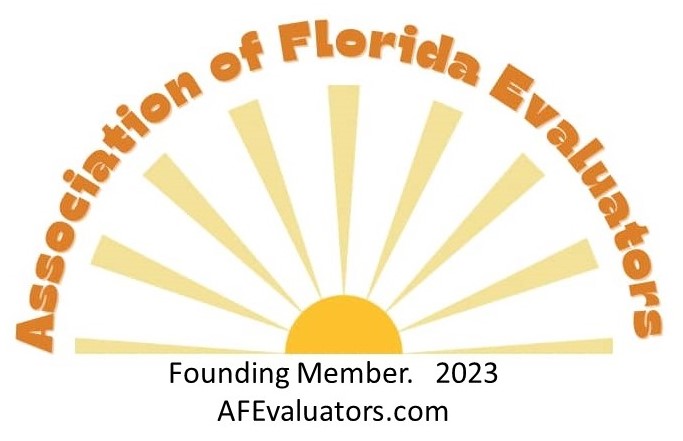|
Talking About
Florida Homeschooling... Evaluations and More |
A good evaluator works for the parents, assisting them in meeting legal requirements and in supporting them when districts overstep their bounds." |
|
Quick answer: No appointment needed. Take photos or scans of a few parts of the portfolio (a bit of the beginning and a bit of the end for each subject covered) and email them to us. (Or send screen shots or share documents or however it works better for you.) Send a bit of the log of educational activities, a few titles of reading materials (at least two), and some samples of work. Finish with a brief phone call; one of us will chat very briefly with the student. Then we'll send documents via email. ======== Detailed answer: 1. Getting started. With an email evaluation, there’s no need for an appointment. Portfolio materials can be scanned or photographed and emailed (or stored on a website and the link may be emailed along with instructions, if any, for logging in). Email evaluations use a combination of email (to send photos or scans of portions of the portfolio or a link to it if the information is stored on a website) and an ordinary phone call (for the legally required discussion with the student. The discussion is not a quiz and is usually a very brief conversation in which one of us explains the progress we‘ve seen in the documentation shared with us). Note that there’s no need to show all of the portfolio. Some of the records from the beginning of the year and some from the end can suffice. Be sure to be include all the sorts of documentation required by law to be in the home education portfolio--see below for more details on what to include. 2. Provide needed information. Be sure to include a note about the contact information required by law: Full name and birth date of the child(ren) being evaluated as well as address and a parent's full name. I also need an email address (to email the evaluation forms to), and telephone number for the follow-up phone call. For most efficient service, use our online forms to send us all the needed information. 3. Show us your documentation. We will want to see some of the 3 types of records required by Florida law to be kept as the portfolio: i. A log of educational activities. (This could be a lesson plan book with notes, a calendar with brief notes, a blog or diary, table of contents pages with dates or check marks, a spread sheet, the lesson plans that come with a published curriculum, a student score report from an online curriculum, or whatever works for how you homeschool.) ii. Titles of reading materials. (The reading materials could be textbooks or workbooks. They could also be titles of magazines, articles, websites, comic books, or whatever works for how you homeschool. Because the word “titles” is plural, you need to supply at least two titles. The titles may be included in the log or kept as a separate record. Titles could be read by the child or to the child or with the child--as fits the particular situation.) iii. Samples of work. (It isn’t necessary to keep everything done over the year. Samples of work could be worksheets or written assignments. They could also be copies, scans or photos of a page or two of various reading materials used. They could be photos of the child working on a project or anything else that shows the sort of lessons done by the child.) We do not need to see all of the documents you have, but we will need to see enough to see evidence that the student has made educational progress commensurate with ability. A few from a variety of subjects from the beginning of the year and a few from the end is usually sufficient. The child isn’t being compared to an arbitrary standard but to his or her own start at the beginning of the year. If a student is working regularly on educational activities throughout the year, progress should be easy to see. Showing me that the student has worked through a curriculum (or a good portion of it anyway) is one way to show progress, but it isn’t the only way. Showing that the student was working on more advanced materials or skills at the end of the year than at the beginning is another way. Showing that the student has improved greatly is another. 4. Payment Most people pay through our website using a credit or debit card or PayPal. Payment may be mailed via check or money order. Or Paypal may be used via the link http://paypal.me/CherylTrzasko. The fee is $38 for one child plus an additional $10 for each sibling evaluated at the same time (so $48 for two children, or $58 for three, etc.). There's an extra $10 fee for those who are in a hurry and need the evaluation done faster than usual. Payment should be sent before the evaluation. 5. Follow-up Phone Call. The follow-up phone call happens after your materials are viewed. It is very brief and is not a quiz, but rather is a discussion of the child’s progress--as required by state law. 6. Receive evaluation forms Evaluation forms will be emailed to you. Under Florida law, parents are to send in the evaluation forms to the district, so we’ll include a link for contact information for the home education department at each school district to help you forward the required form to your school district. Parents should keep a copy of the evaluation paperwork with their records. Please let us know if you have any questions. Cheryl Trzasko [email protected] See Facebook.com/FLHomeschoolEvaluations for many more questions and answers
0 Comments
Your comment will be posted after it is approved.
Leave a Reply. |
Archives
April 2024
Categories
All
|

 RSS Feed
RSS Feed






